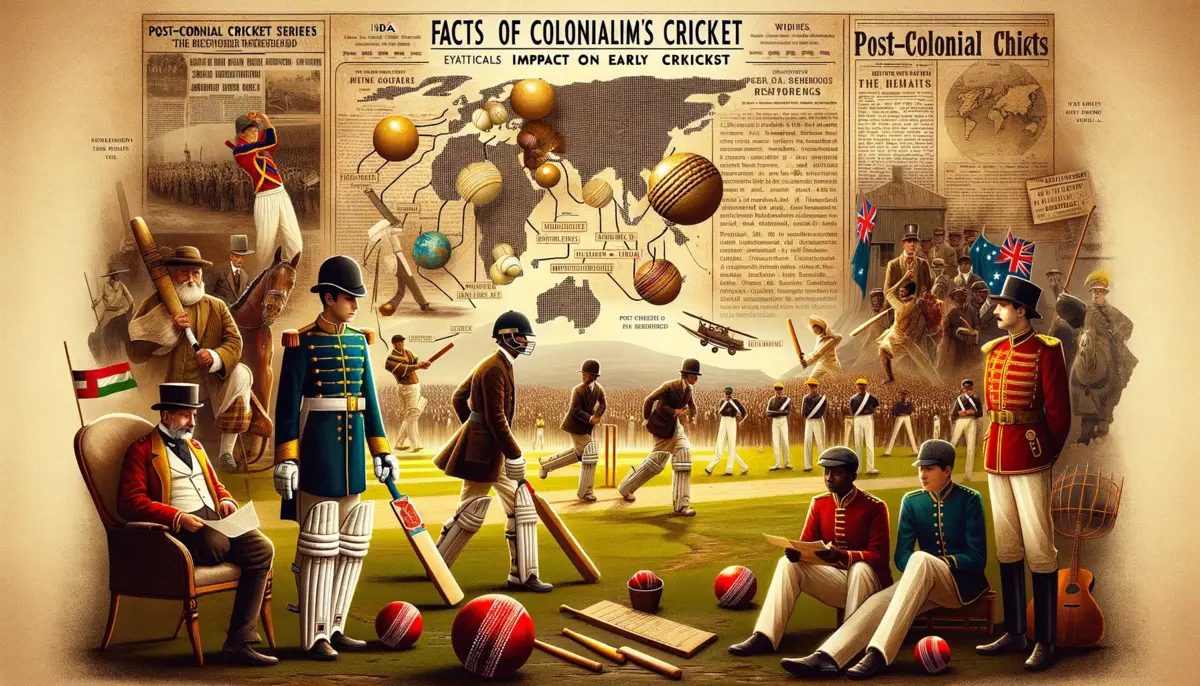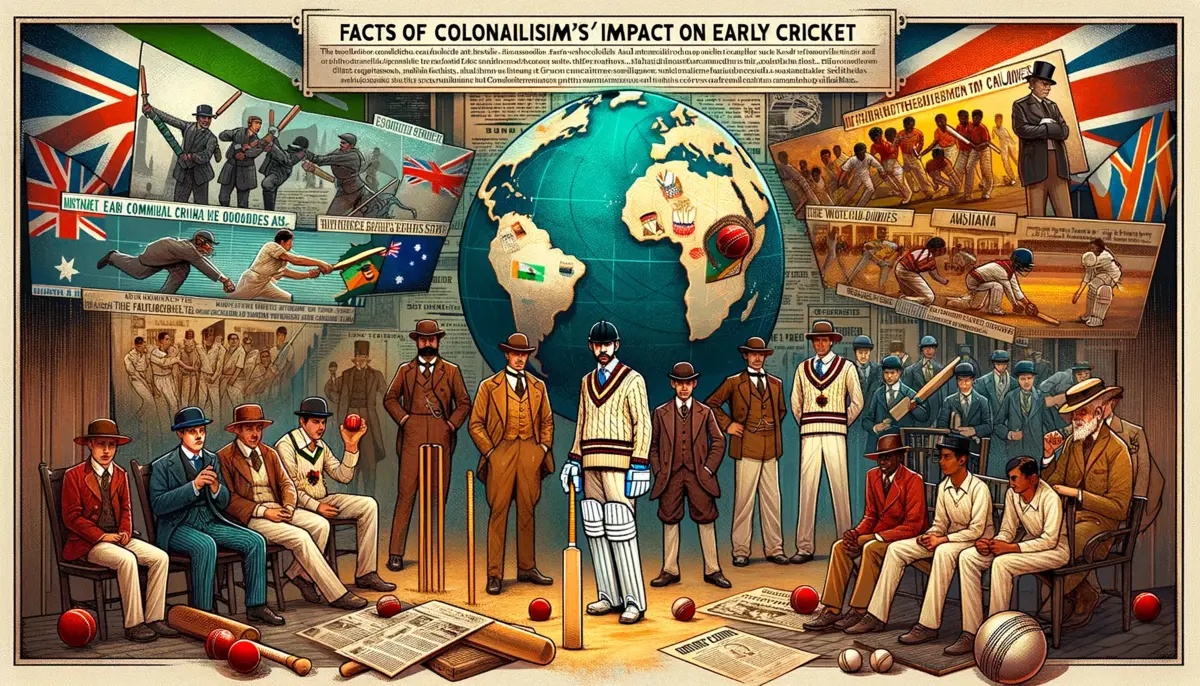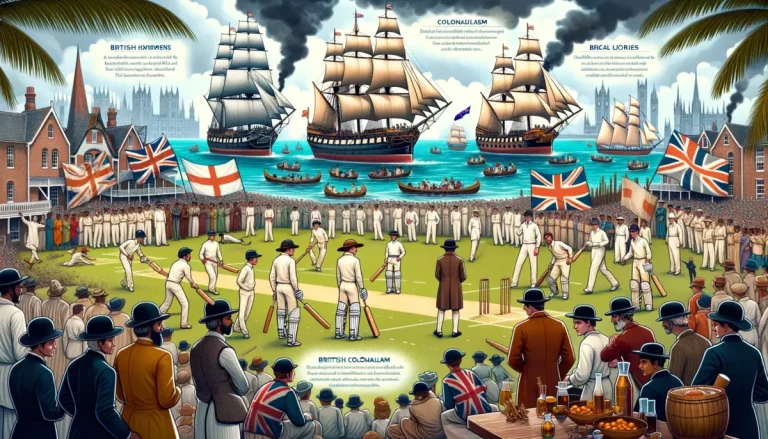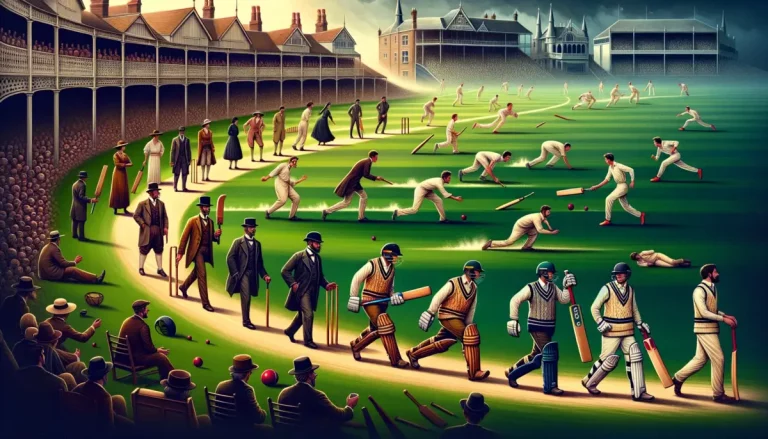Top 5 Facts of Colonialism’s Impact on Early Cricket
Top 5 Facts of Colonialism’s Impact on Early Cricket – Cricket’s emergence and growth as an organized sport was deeply intertwined with British colonialism.
As the British Empire expanded, cricket was exported to and promoted across colonies. The sport’s early development reveals many aspects of colonial power dynamics.
200% Welcome Bonus | SPRIBE
200% Welcome Bonus | SPRIBE
- UPI, Paytm, gPay & PhonePe withdrawals
- Fast deposits with UPI
- Available in four different Indian languages
Cricket clubs served as social institutions reinforcing colonial authority and identity. British schools fostered cricket to “civilize” colonial subjects.
While often exploited for imperial purposes, Indians, West Indians, and others displayed agency through mastery of cricket.
Article Highlights
Hide- Cricket was introduced to colonial territories during the 18th and 19th centuries, becoming popular among local populations and integrating them into colonial culture.
- The British utilized cricket as a tool to reinforce cultural assimilation, eroding indigenous traditions and suppressing resistance movements.
- Cricket facilitated the spread of British cultural influence, reinforcing social hierarchies within colonies and leaving a lasting impact on societies.
- Colonial education shaped the evolution of cricket techniques and strategies, promoting discipline, teamwork, and fair play, and contributing to the refinement of strategy and evolution of cricket equipment.
The colonial imprint remains visible through Test cricket structures and Anglo-centric administrative bodies. Examining cricket’s colonial roots provides insight, not to indict it, but to understand the inequalities that shaped the sport.
A balanced reckoning can acknowledge wrongs while appreciating how colonized people resisted through asserting their sporting voice. Working through this complex history can strengthen cricket’s spirit of fair play today.
Introduction of Cricket by British Colonizers

Cricket was predominantly introduced to colonial territories by British colonizers during the 18th and 19th centuries, frequently establishing it as a popular sport among local populations.
The impact of cricket on local culture was profound, as it not only became a form of entertainment but also a means of social integration and cultural assimilation.
The British colonizers used cricket as a tool to assert their dominance and control over the colonies, and in doing so, they inadvertently facilitated the spread of the sport among the local communities.
However, the introduction of cricket by British colonizers was not always met with passive acceptance. Resistance and appropriation were common responses from the colonized populations.
Local communities often adapted the game to suit their own cultural contexts, incorporating their own traditions and practices.
This process of appropriation allowed the colonized people to reclaim some agency and assert their own identities amidst the dominant colonial culture.
Evolution of Cricket Equipment: A Journey Through Time
Evolution of Cricket Equipment: A Journey Through Time – Cricket equipment has undergone ... Read More
Furthermore, cricket became a platform for resistance against colonial rule. Local players, through their performance in the sport, challenged the notion of British superiority and showcased their own skills and abilities.
This resistance was not limited to the playing field; cricket became a symbol of national pride and a rallying point for anti-colonial movements.
Cricket as a Tool of Colonial Power
During the colonial era, cricket was strategically utilized by British colonizers as a means to assert and maintain their power and control over the colonies.
The sport served as a tool for cultural assimilation, reinforcing the supremacy of British culture and values while eroding the indigenous traditions and customs of the colonized populations.
Through the establishment of cricket clubs and leagues, the British sought to create a sense of unity and loyalty among the local elites who were allowed to participate in the game.
This created a sense of privilege and exclusivity for those who aligned themselves with the British colonial power.
At the same time, cricket was also used as a means to suppress resistance movements and maintain social order.
The sport provided a distraction for the colonized populations, diverting their attention away from political and social issues.
By encouraging the locals to participate in cricket, the British were able to control and regulate their activities, preventing the emergence of organized resistance movements.
| British Utilization of Cricket | Impact on Colonies |
|---|---|
| Cultural assimilation | Erosion of indigenous traditions and customs |
| Suppression of resistance movements | Diversion of attention from political and social issues |
Spread of Cricket Through British Empire
The dissemination of cricket throughout the British Empire facilitated the spread of British cultural influence and further solidified the dominance of the colonial power.
The sport was not just a game; it became a tool for cultural assimilation and a means to exert control over the colonies. Here are three key aspects of the spread of cricket through the British Empire:
- Cultural Assimilation: Cricket served as a powerful instrument for the British to impose their cultural values and norms on the local populations. By adopting the sport, the colonized individuals were inadvertently embracing British customs and traditions, which helped in the process of cultural assimilation.
- Local Resistance: While cricket was embraced by some in the colonies, it was met with resistance by others who saw it as a symbol of British imperialism. Some local communities saw the sport as a way to reinforce colonial power and rejected it as a form of cultural domination.
- Social Hierarchies: The spread of cricket also had implications on social hierarchies within the colonies. The sport was predominantly played by the elites and the privileged classes, further entrenching existing social divisions and reinforcing the power dynamics between the ruling colonial class and the local population.
The spread of cricket throughout the British Empire not only popularized the sport but also had far-reaching consequences in terms of cultural assimilation and local resistance, leaving a lasting impact on the societies of the colonies.
Influence of Colonial Education on Cricket Development
One significant aspect of colonialism’s impact on early cricket was the extensive influence of colonial education on the development of the sport.
Colonial education played a vital role in shaping the evolution of cricket techniques and strategies, as it provided the necessary infrastructure and training for the game to flourish.
Colonial education systems, established by the British Empire in their colonies, aimed to instill British values and customs in the local population.
Cricket was seen as a means to promote discipline, teamwork, and fair play, which were considered essential traits for individuals living under colonial rule.
As a result, cricket became an integral part of the curriculum in schools and colleges, allowing young individuals to learn and master the game from an early age.
To better understand the influence of colonial education on cricket development, let us delve into the evolution of cricket techniques through a table:
| Evolution of Cricket Techniques | Impact of Colonial Education |
|---|---|
| Growth of batting techniques | Encouraged extensive coaching |
| Development of bowling styles | Emphasized proper training |
| Introduction of fielding skills | Promoted teamwork |
| Refinement of strategy | Fostered analytical thinking |
| Evolution of cricket equipment | Facilitated technological advancements |
Through the systematic teaching and coaching provided by colonial education, cricket evolved from a recreational pastime to a professional sport.
The influence of colonial education on cricket development cannot be understated, as it laid the foundation for the sport’s popularity and success in the colonies and beyond.
Legacy of Colonialism in Modern Cricket
The lasting impact of colonialism can be observed in the continued influence and presence of British cricket traditions in the modern game.
The legacy of colonialism in modern cricket is multi-faceted and encompasses various aspects that have shaped the sport as we know it today. Here are three key subtopics that highlight the enduring effects of colonialism:
Cultural assimilation
- British colonial rule led to the spread of cricket to different parts of the world, including India, Pakistan, Sri Lanka, and the West Indies.
- As a result, cricket became deeply ingrained in the culture and identity of these nations, with players adopting the techniques, strategies, and values of the British game.
- This cultural assimilation has led to a unique blend of British and local cricketing traditions, creating a rich tapestry of styles and approaches in the modern game.
Post-colonial cricket
- After gaining independence, former British colonies continued to participate in international cricket, maintaining the structures and systems established during colonial rule.
- This post-colonial cricket allowed these nations to assert their own identities and showcase their cricketing prowess on the global stage.
- The influence of colonialism can still be seen in the dominance of former British colonies in international cricket, with teams like India and Australia consistently among the strongest.
Commercialization and globalization
- The commercialization of cricket, with the advent of lucrative tournaments like the Indian Premier League (IPL), has further accelerated the global reach and influence of the sport.
- This commercialization can be seen as a continuation of the economic legacy left by colonialism, with cricket becoming a profitable industry that attracts investment and sponsors from around the world.
- The globalization of cricket has also led to increased participation from non-traditional cricketing nations, further diversifying and expanding the sport’s influence.
Summary
In conclusion, colonialism had a profound impact on the development and spread of cricket.
The introduction of the sport by British colonizers, its use as a tool of colonial power, and the influence of colonial education all contributed to its growth.
Claim up to ₹15,000 Welcome Bonus Now
Claim up to ₹15,000 Welcome Bonus Now
- Fastest Indian Rupees Withdrawals
- The Biggest Bonuses in India
- Available in four different Indian languages
Today, the legacy of colonialism can still be seen in the dominance of former British colonies in the cricket world.
The sport continues to be shaped by its colonial origins, making it an important aspect of post-colonial identity and cultural heritage.








